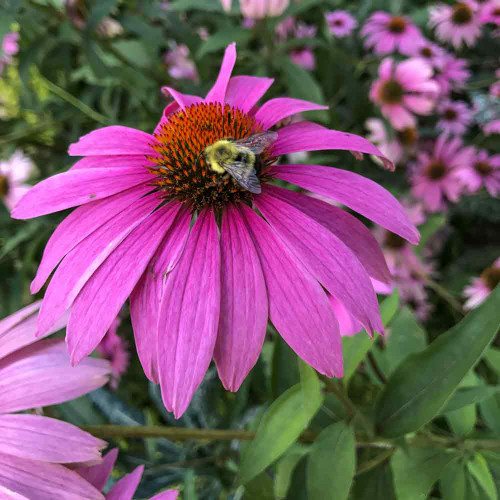Description
100 Plants to Feed the Bees
How can we – as home gardeners – help the bees? Gardeners are eager to save honey bees, bumblebees, native bees, and other pollinators, but too often we don’t know how or where to begin.
With these 100 nectar and pollen-rich plants, you can cultivate a more bee-friendly world and turn your balcony, backyard, farm, or roadside — anyone with a scrap of yard or a window box — into a pollinator paradise.
This at-a-glance, photo-driven book is for anyone who’d like to grow a flower to help nourish a bee; for gardeners, whether your scope is a balcony or a half-acre backyard; for beekeepers, to plant a bee pasture to support your colonies; for growers, to attract native and honey bees for better crop pollination; and for land managers, to select native and garden species to sustain the bee population in public parks, urban streets, golf courses, botanic gardens, on green roofs, and along highways.
The recommendations are simple: pick the right plants for pollinators, protect them from pesticides, and provide abundant blooms throughout the growing season by mixing perennials with herbs and annuals!
About The Xerces Society
The Xerces Society is a nonprofit organization based in Portland, Oregon, that protects wildlife through the conservation of invertebrates and their habitat.
Their name (pronounced Zer-sees) comes from the now-extinct Xerces blue butterfly (Glaucopsyche xerces), the first butterfly known to go extinct in North America as a result of human activities. The Xerces blue's habitat was destroyed by development in the sand dunes of San Francisco, and the species was declared extinct by the 1940s.
Established in 1971, the Society is at the forefront of invertebrate protection worldwide, harnessing the knowledge of scientists and the enthusiasm of citizens to implement conservation programs. They are the authors of 100 Plants to Feed the Bees, Farming with Native Beneficial Insects, and Attracting Native Pollinators.
Table of Contents
- Preface: What's Old Is New
- Plants and Pollinators: An Overview
- Pollinators and Pesticides
- Icon Key
- 1- Native Wildflowers
- Anise Hyssop, Giant Hyssop
- Aster
- Beebalm
- Black-Eyed Susan
- ...and many others!
- 2 - Native Trees and Shrubs
- Acacia
- Basswood
- Blackberry, Raspberry
- Black Locust
- ...and many others!
- 3 - Introduced Trees and Shrubs
- Orange
- Plum, Cherry, Almond, Peach
- 4 - Introduced Herbs and Ornamentals
- Basil
- Borage
- Catnip
- Coriander
- ...and many others!
- 5 - Native and Nonnative Bee Pasture Plants
- Alfalfa
- Buckwheat
- Clover
- Cowpea
- ...and many others!
- Average Number of Flower and Herb Seeds per Pound
Learn More
From the soil to the seed to the food you eat - we'll help you grow your best garden!













